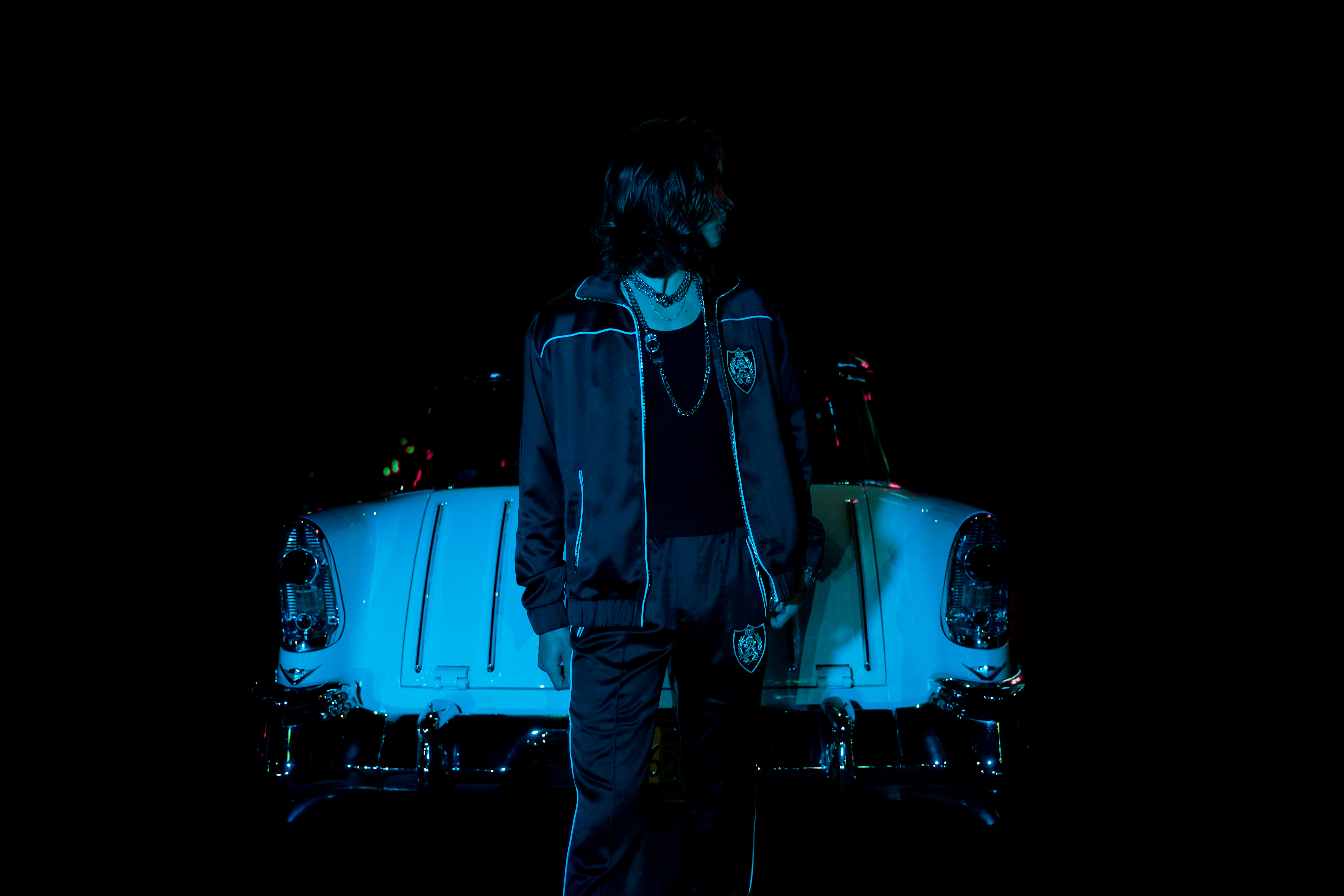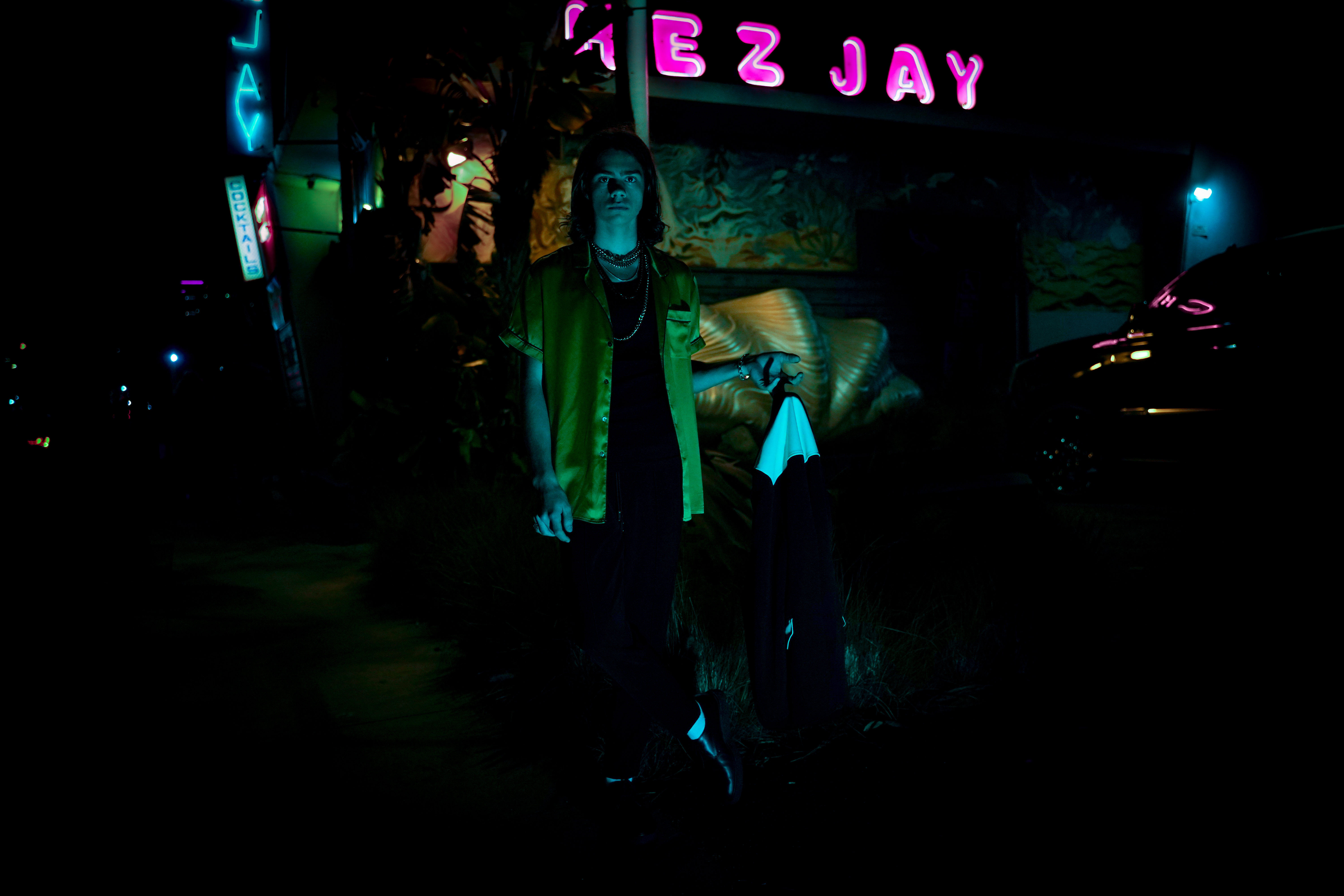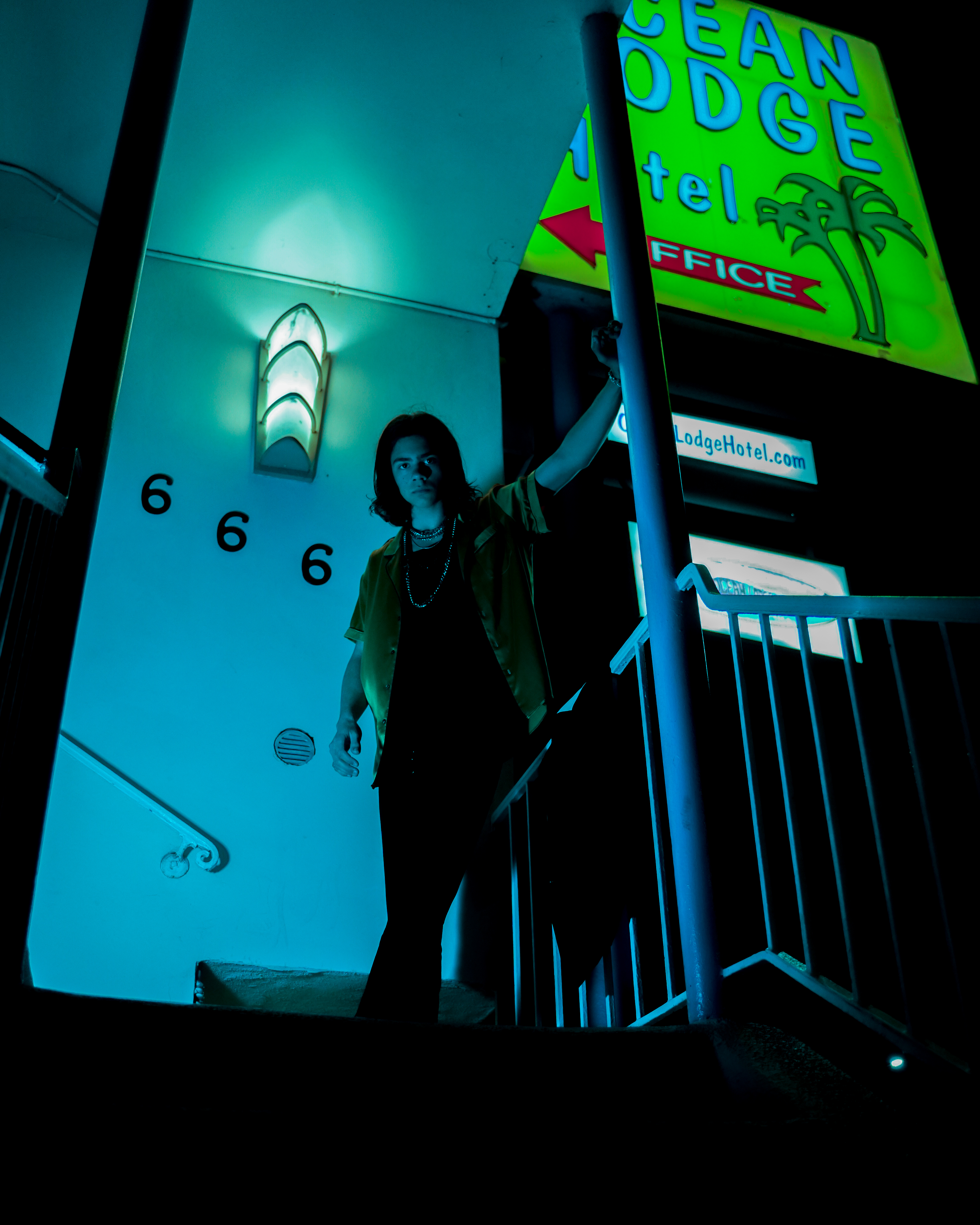Whether you know it or not, there is a high chance that you’re familiar with the fits out of LA-based streetwear and ready-to-wear label Keiser Clark. Namely, because the label is probably your favorite athlete’s favorite streetwear brand. From Odell Beckham Jr. to James Harden, to Steph Curry, to Russell Westbrook, Keiser Clark has some sort of undeniable vibe that works on professional ballplayers and celebrity party monsters like catnip.
In just over the three years, Keiser Clark — headed by the joint team of superfriends Marc Keiser and Andrew Clark — has made a name for itself thanks to their one-off leather jackets that caught on like wildfire across social media and went straight into the hands of stylists and finally to the musicians, actors, and athletes who blew up the brand so fast that the label showed their first full collection at Paris Fashion Week in 2018, just one year after being founded.
Fueled by an aesthetic that touches on the vintage rock heritage and gritty nocturnal glamour of a by-gone Hollywood age — when the city still felt a little dangerous, played host to warehouse raves, and had more dive-bars and celebrity-owned club spaces than high-rise apartments and Urban Outfitters.
I chopped it up with one half of Keiser Clark, Marc Keiser, about the importance of celebrity cosigns, the inspirations behind his designs, and the undeniable power of the leather jacket. The streetwear star also offered some sage advice for aspiring designers looking to draw eyes. Check out our interview as well as photos from the latest Keiser Clark collection below.

There seems to be an element of danger to your label. What was the inspiration behind that?
I think for us with designing, and when we first kind of started the brand, Andrew Clark, my partner — there’s the Keiser-Clark for you — it was the after-hours for us. And I think for me it was kind of exploring that night time nature. With our first collection, our second collection, and now into our third collection you kind of see this nocturnal note carried throughout.
I think especially in LA, you kind of have this seedy underbelly that I’m trying to explore but also giving it that dreamscape glamor vibe. The danger — our first collection being called Canis Lupus, the wolves, and then the dog, and now the rabbit, kind of just exploring the animalistic nature.
So the city itself is an intrinsic part of your designs?
For sure. I think we’re all creatures of our own environment. So, being in LA, you kind of have that nightlife scene. You have that shade of Hollywood and the glamor of that. So for me, it’s weaving those two aspects together into one aesthetic.
The brand got its start playing off of the leather jacket. What is it about the leather jacket that you find so inspiring?
For me, I think I’ve always just viewed the leather jacket as a badass staple piece. I think it’s a piece that’s going to turn a head or two. I think it’s aggressive. I think there are elements of confidence that come from wearing that. So I think for us, with our first collection it was starting with staple pieces but, kind of giving them that new life.
That’s my favorite piece to wear out is our patent leather biker jacket. It’s definitely a piece that I get complimented on. I think that’s kind of what we want to do with the collection with all the pieces we are designing. Get someone noticed, get someone to turn their head — and I think the leather jacket is a perfect place to start with that.

Who are some of your fashion influences?
I think I draw from a wide array of influences. I think on the cleaner refined end I’ve always admired what Tom Ford’s doing. I think just from branding, from design, I think it’s just incredibly beautiful. I love G&J, I think what he’s doing is incredible. Definitely heavy influence there.
What is it about Keiser Clark that you think caught on so well with stylists and celebrities starting out?
I think starting out we were doing a lot of one-off leather jackets and I think that kind of caught the eyes of some celebrities. I think for a lot of it there, we get told a lot that they’re great performance pieces, they’re great tunnel pieces, they’re loud and they’re different but they still maintain their wearability.
I think that kind of works with a lot of the performers but also a lot of the athletes that want to stand out, want to put together a nice fit to walk down the tunnel with, and get noticed, and get recognized. I think the style is kind of caught onto that. And, I think we’re fortunate in LA having a lot of the stylists be local to our community and I think they have that ability to kind of be looking at the younger brands in the area.
Have celebrities, from musicians to people in sports wearing the brand, helped to elevate the label? How important is getting that celebrity cosign?
I think so. I always talk about how you need validation from celebrities or not that you need, but it’s great to have validation from celebrities. It’s great to have validation from editors and it’s great to have that validation from retail partners and buyers. I think for us, having that celebrity attention and that celebrity backing really has helped elevate the brand. It helps solidify the brand, solidify the price points, solidify the design and such.
Because, I think a lot of us, whether it’s musicians, actors, athletes, I think we look up to them. We look to them for what we should be wearing.
Should a young designer focus on getting effective celebrity cosigns or should they just focus on the designs first and the rest of it just falls into place?
I would caution anyone, if anyone says you “need” anything, I would caution against that because I think if I’ve learned anything, you don’t need one person or one celebrity or one store.
I think it’s great, it’s an added bonus, you hope for it, you pray for it. But in terms of needing it… I think in the fashion space right now having the celebrity cosign is an incredible bonus. It’s great to see what at that high end, what they’re buying, what they’re wanting to wear, what they’re engaging with. There are tons of brands out there, probably more so than ones that have celebrity co-signs, that don’t have celebrity cosigns that I’m sure are doing incredible things.
So, I think it’s hard to focus on one path. Whether, that’s just design or just marketing but, I think having a cosign in place definitely helps. But I don’t know if that business model that somebody should solely focus on.
How do you do something like get celebrity eyes on your products and how do you get that interest in your label if you’re just starting out?
I give Instagram credit. I think having some of those celebrity stylists just be watchdogs of the next wave of designers coming up and having them looking through Instagram, we’ve been very fortunate to have some celebrity stylists just come across our Instagram and want to pull something or they see another celebrity wearing it.
And then, I think personally, I do do a lot of outreach to stylists and sometimes if you send a full lookbook to a stylist they might see a couple of pieces and be like, “Oh, I don’t think it’s right for my client.”
I’ve learned if I have a celebrity in mind that I want to work with, I try and look at what, from our collection, they would engage with or what would fit their personal style. And then, kind of edit down the pieces I’m sending to them or their styles to be like, “Hey look, I think these pieces would work really well.”
Of all the people who you’ve seen rocking your brand from James Harden to Future to Michael B. Jordan, whose kind of surprised you the most, or left you star-struck?
Well, I think whether you’re a huge celebrity or just starting out in the industry, I think it’s always a surprise to see anyone wearing your brand. I think it’s an incredible feeling to see that.
I think starting out, having OBJ cosign on the brand, the Chainsmokers being an early cosign. Guys that I personally looked up to and follow it or listen to their music. I think those were hugely surprising in that regard. My birthday last year, having Meek Mill and Future both on tour together and performing on stage together in full Keiser Clark fits is crazy!
You never know if someone’s going to rock with your brand or rock with your aesthetics. So, I think every time you see that, whether they’re a celebrity or just an everyday person, it’s always a good surprise.

Right. What do you think it is about Keiser Clark that appeals to so many people in sports? Because it seems like a lot of your fans are professional ballplayers.
Yeah, I think with us we try and focus on going after that athletic body, that athletic build with our tops, we go up to two XL. Sometimes we do three XL with the vintage tees and the hoodies.
For denim, we go up to 38. I think we’ll, as we go into this next season, we’ll continue to expand up, especially as we have bigger guys and athletes reaching out. Like, “Oh, like I wish you could do a 42. I wish you could do a 44.” For me, I want those guys to feel included in what we’re doing.
I wanted to talk a little bit about sustainability. As a new label that’s obviously something that you probably think about. But something that you also have to weigh is what are you able to do as a smaller label where sustainability increases expenses? So I just wanted to know how your brand kind of navigates that world and what your personal thoughts on sustainability in the fashion industry are?
I think as we continue to grow, as we continue to get higher distribution, I think that becomes an ever more present conversation we’re having. Just in terms of packaging, just in terms of the materials we’re using. I think a small step for us is doing the upcycle vintage tees that we do. That’s a big seller for us.
Even though it’s a small step and the impact is probably smaller than it should be at the moment. I think it’s been great that we’ve been able to create tees that are standing out in the world and bring them new life. As a young brand, I think that we’re not working with incredible budgets, very much on a tight budget. So, it’s an ever-present conversation. I think you’re trying to kind of put on your own air mask, so to speak, before you’re helping someone else put on their air mask.
But conscious little things, like our packaging that we do, how everything that ships from our website comes in a reusable bag. We’ve had a good reaction to that and we see a lot of people using those bags and not just throwing out a box or something.
What advice would you have for aspiring designers?
Just be cautious of anyone who tells you you need anything. I think we’re in a very opinionated industry and if I’ve definitely learned anything it’s that you really don’t need anything. You can want and hope and pray for something. But I think you just kind of have to step out there and see what’s working and what’s not working and react to it. I think on a personal level, because, it’s just me and my business partner at this point, I’m very involved in everything. I think whether you have a team of 50 or a team of two, the more you can be involved in, the more you can be at meetings with editors previewing your collection.
I personally been traveling for a month now taking appointments. I take every appointment personally. So getting that feedback on what they’re engaging with, what they’re touching, what their comments are about fit. Are they trying something on? Did they like this material with that hardware? And then also, on the stylist side of things, working with the stylists and seeing what’s working for them, what’s not working for them. I think in a greater space, be appreciative to everyone, whether it’s a stylist, a buyer, an assistant, whether it’s your PR firm, your sales team.
I think the more you can appreciate those people, even something as simple as saying “Thank you,” or “Hey, I appreciate you.” I think that recognition and the consideration really go a long way. I always love to say, you have to treat every “no,” as a need to make more effort.
I do a lot of outreach to stylists, people in the industry, and you get told “no” a lot. You get left unread a lot, you get ignored a lot. I think you have to be willing to move past that and you have to be willing to accept that no and say, “they’re not saying no forever they’re just saying no for now.”
We definitely are in an industry where you need to convince somebody that you are worthy, that you’re worth spending money on, that you’re worth their time and their effort. And I think if you think of it like that, you kind of take all the no’s and all the setbacks and you kind of take it as, “all right, I need to convince them more. I didn’t do enough to bring them to the table.”
You have to be willing to learn. You have to be willing to problem solve. Every day you’re faced with some issue or concern and it’s definitely not a perfect world we’re living in. The stronger you are and able to move past that and use it as fuel, I think the better you’ll do and the longer you’ll be around. I think the more people you’ll have willing to work with you and willing to sign on and willing to support you. I very much view Keiser Clark as a family. I don’t think about whether it’s a stylist, a celebrity, a customer, an editor, buyer, I want people to feel a part of the Keiser Clark family.
What do you hope to see in men’s fashion going forward or fashion in general?
I think we kind of get stuck in this trend machine of, “streetwear’s dead, logos are dead.” I think what I do appreciate about Instagram and social media and everyone having more access to the industry than they did before is, I think there’s room for a lot of people. I think there’s room for people to not just follow a trend or follow a specific look. They can engage with something that they feel is representative of themselves, but also, something that they feel confident in.
Because, I think for me personally, I have pretty much a uniform I wear every day. I feel confident in it. I feel good in it. I feel ready to take on the day. Take on meetings. I hope as we move forward, we get away from having one aesthetic and one trend and people feel more comfortable wearing what they want to wear and less of what they’re told to wear.


